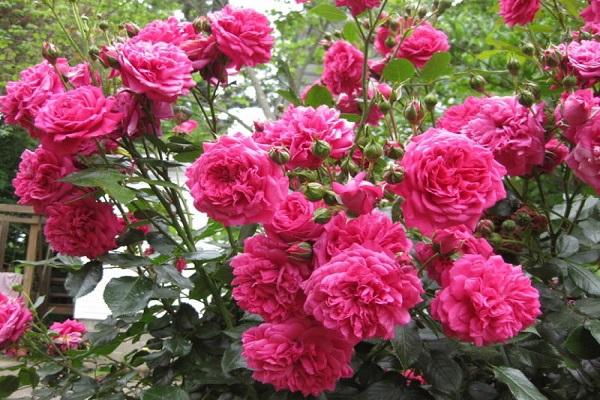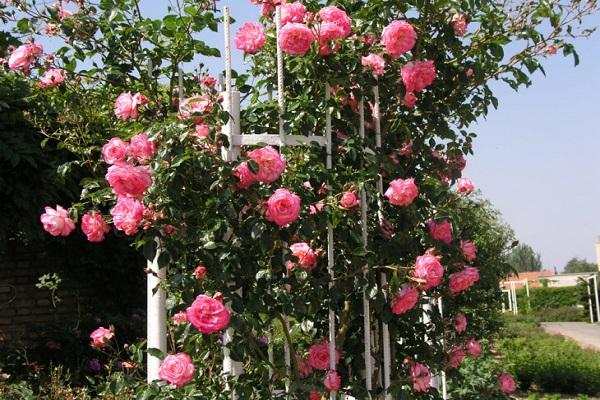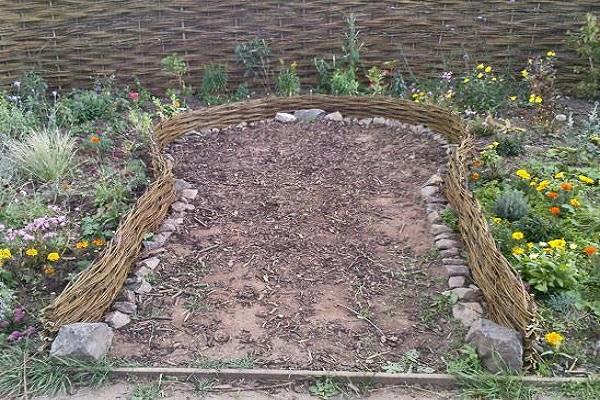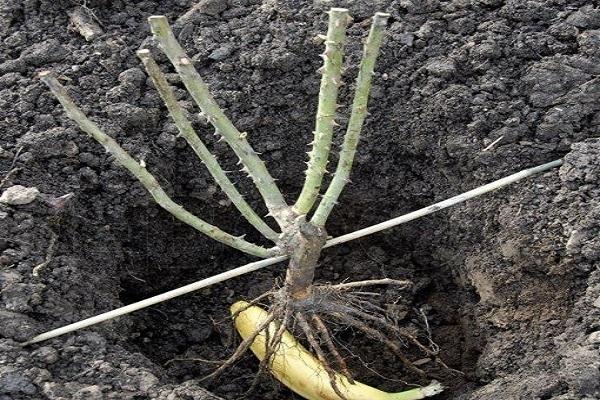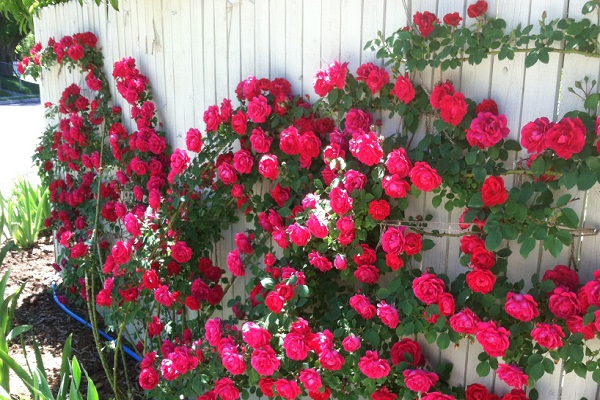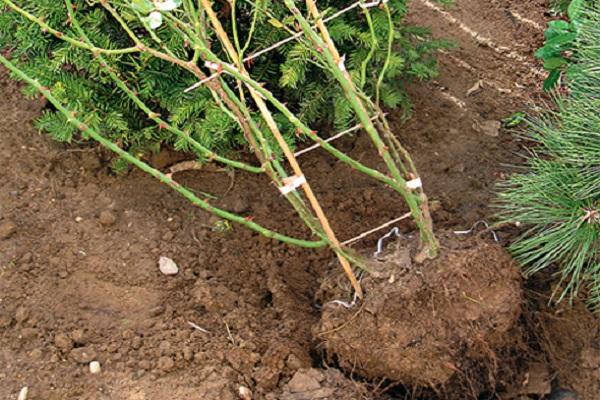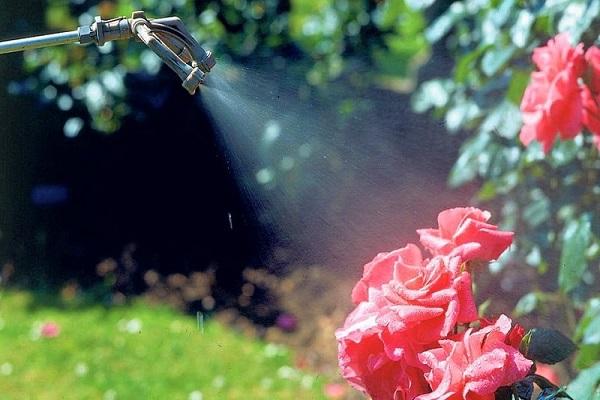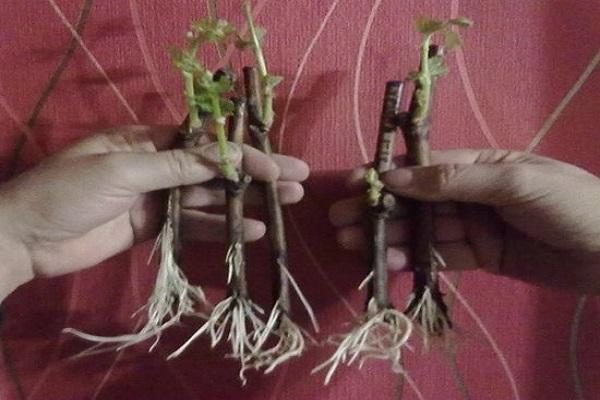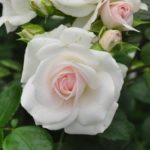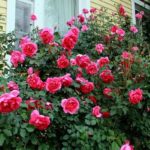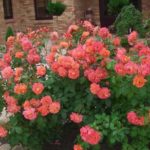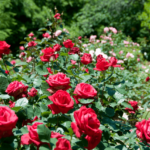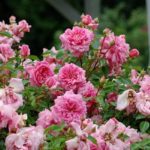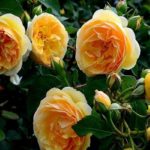Climbing rose with a long flowering period Laguna belongs to the German collection of roses. This marvelous flower has a pleasant, persistent aroma during the flowering period and strong immunity. The Laguna variety is used in landscape design as a hedge and used in individual plantings. The fragrant, elegant plant will bloom until frost.
- Description of Laguna roses
- Variety varieties
- Blue
- Sweet
- The main positive and negative aspects of the variety
- The nuances of growing flowers
- Selecting a location
- Preparation of planting material
- Landing
- Subtleties of caring for roses
- Watering
- Fertilizer application
- Garter
- Trimming
- Transfer
- Preparing for winter
- Protection from diseases and pests
- Breeding rules
- Application examples in garden design
Description of Laguna roses
The climbing rose Laguna belongs to German selection, the variety was obtained in the early two thousandths. The fragrant beauty bush is erect; roses are grown using garters and supports, and are often used as hedges.
Characteristics of the variety:
- Long flowering period: from June until the first frost.
- Persistent immunity to fungal diseases.
- It has a pronounced fruity aroma.
- The height of an adult plant is 2.5 meters;
- The variety is winter-hardy;
- Double flowers, up to 10 centimeters in diameter, 8 buds per inflorescence;
- The leaf blades are large and dark green in color.
- The number of thorns on the stems is abundant.
The climbing type Laguna is the pearl of European selection. The plants are unpretentious and quite frost-resistant; they tolerate changes in temperature and humidity in the summer. For these qualities, this gorgeous flower is loved by gardeners around the world.
Variety varieties
The German climbing beauty has two subtypes: Blue and Sweet. Plants differ in the color of their petals and shades of smell.
Blue
Roses of this subtype are distinguished by their extraordinary ability to change the color of the petals from the moment the bud forms until they fully open, from bright lilac to light purple. Blue Lagoon belongs to the category of climbers. Flower size is medium.
Sweet
The Sweet color shade amazes with its tenderness. The pink petals of large double inflorescences transform the area in an instant and fill the area with fragrance and a pleasant citrus aroma.
The main positive and negative aspects of the variety
The advantages of the variety include:
- Winter hardiness.
- Unpretentiousness, ability to tolerate changes in summer temperatures and humidity.
- The petals do not fade in the bright sun.
- Persistent immunity to fungal diseases.
- Pronounced fruity aroma.
- Long flowering period.
Among the disadvantages of the variety, gardeners highlight:
- Bushes must be covered for the winter.
- Abundance of thorns on the stems.
- Supports and garter are required when growing.
If you follow all the nuances of care, growing a beautiful bush on your site will not be difficult for both beginners and experienced gardeners.
The nuances of growing flowers
The complex of caring for roses consists of following agricultural technology, selecting a planting site and systematic measures for pruning, watering and fertilizing.
Selecting a location
The optimal position of the bush on the site is determined taking into account recommendations for creating landscape design. Laguna bushes are resistant to the bright rays of the sun, the petals do not fade. But it is still recommended to plant the European beauty in places of partial shade.
On a note! Stagnation of moisture at the roots is detrimental to a flowering plant. Roses are not planted in lowlands and marshy soils.
The bush will hurt and take a long time to grow on poor, acidic soils. The soil for roses should be nutritious and contain a large amount of humus.
Preparation of planting material
To purchase a varietal plant, go to a nursery or specialized store, so the risk of buying a diseased plant and making a mistake in the variety is minimal.
The seedling is carefully examined for signs of fungal infections. White coating on the leaves is unacceptable. The root system must be well developed. It is recommended to purchase seedlings with a closed root system. Before planting the plant in the ground, soak the rhizome in the Kornevin solution.
Landing
The diameter of an adult plant is 1 meter; planting holes are marked at a distance of 1.5-2 meters from each other during group plantings.The depth of the hole is 60 centimeters; expanded clay drainage is installed at the bottom.
When planting a plant, the roots are carefully straightened, the root collar should remain above the surface of the ground. Fertilizers are applied under the bush at the time of planting.
Subtleties of caring for roses
Laguna is an unpretentious variety of climbing roses. The complex of plant care includes rational watering, systemic fertilizing, tying, pruning and preparing the bush for the winter.
Watering
Roses are watered on average once a week, directly under the bush, with warm water. In group plantings and large areas, drip irrigation is used.
The optimal time of day for irrigating crops is the evening hours, after sunset. After watering, the bushes are hilled and loosened, and mulched with sawdust or humus to maintain moisture balance.
Fertilizer application
Climbing species need mineral supplements, especially potassium and phosphorus. The plant also needs to be fed with an infusion of bird droppings or mullein once a season. It is convenient to use complex fertilizers for roses, presented on the shelves of specialized stores.
Garter
Rosa Laguna needs a garter. The bush is formed about 2 meters high; arches, sheer walls, a fence, and garden nets are used as supports. The garter is combined with the pruning procedure and the formation of a bush.
The Laguna bush can be formed vertically or using the horizontal garter method.
Trimming
To stimulate flowering in the spring, rejuvenating pruning is carried out. After the first wave of flowering, it is necessary to remove from the plant the branches directed towards the middle of the bush, which thicken the rose as a whole. Closer to autumn, sanitary pruning is carried out, diseased, dried branches are removed from the bush.
By the time cold weather sets in, the bush is pruned, bent to the ground and protected from future frosts.
Transfer
It is not recommended to replant climbing beauties; the bush may stop blooming for a long time. But if there is a need for transplantation, then it is advisable to carry it out in early spring - at the time of bud set.
Preparing for winter
During the winter cold period, it is necessary to protect the plant’s root system and shoots. The bush is spudded, the trunk circle is sprinkled with humus, sawdust or last year's foliage. The whip is removed from the supports, trimmed and bent to the ground. Then the plant is covered with agrofibre or spruce branches.
Protection from diseases and pests
Preventive measures to protect plants from infections and pests are as follows:
- Sanitary pruning of roses in spring and autumn.
- Spraying shrubs in early spring, before the buds swell, with Bordeaux mixture.
- Fungicide treatment in autumn and spring.
- Planting companion plants with a pungent odor near roses.
In general, the Laguna climbing rose's immunity to fungal diseases is high. With regular care, proper pruning and preventative treatments, the rose does not get sick.
Breeding rules
The European beauty is propagated mainly by cuttings, although the seed method can be used.
To propagate by cuttings, lignified branches are cut from the plant and sawed into cuttings 15 centimeters long so that there are three or four living buds on the stem. The bottom of the stem is cut at an angle, soaked in the Kornevin solution, and then dug into the ground. After about 30 days, sprouts will appear on the daughter branches.
Application examples in garden design
The basic rule for creating a landscape when using climbing beauties is to select varieties so that the flowering period of roses alternates: when some fade, others bloom.
Rose Laguna gracefully combines with color palettes of climbing roses in white, milky, and yellow shades. Fragrant hedges form along fences, walls of terraces and gazebos. The lagoon is used to create flowering arches and design the entrance to the flowering garden.

